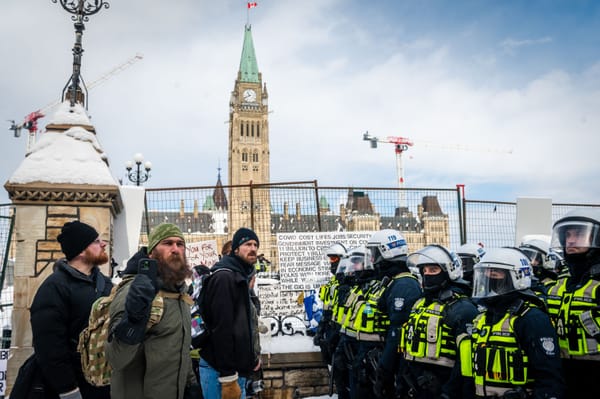The freezing of protesters’ digital bank accounts is a new technique of social control and suppression of dissent, deployed by governments and corporations acting in tandem since 2021. Yet left intellectuals who critically study the machinations of power are oddly silent about it.
It began with the Jan. 6 Capitol riot. In the aftermath, the crowdfunding site GoFundMe banned fundraising for travel expenses to any political rallies “where there is a potential for violence” (surely all political rallies have such a potential). A year later, the Trudeau government in Canada launched a more severe maneuver, ordering online bank accounts be frozen for participants in the truckers’ protests against vaccine mandates. It was this device, above all, that ultimately defeated the trucker uprising.
Other protesters, in other parts of the world, took note. In July, farmers in the Netherlands militating against “green” anti-fertilizer restrictions hoarded cryptocurrency in anticipation of eventual seizure of their personal financial assets by the Dutch government or the European Union (that the latter has floated the idea of instituting a central-bank digital currency has only further inflamed these protesters’ fears). Most recently, a judge in Brazil last month ordered that protesters against Lula’s electoral victory over Jair Bolsonaro have their digital bank assets frozen.
This method of subduing dissent—what technology theorists would call a technique or “technic” of social control—merits far deeper intellectual attention than it has received. Yet the topic has been dismissed, largely because the targets of this technique have so far been citizens with few friends among academics who might otherwise take an interest in the expansion of surveillance and control. When most of the targets can be ghettoized as “right-populist”—a category that includes many who just a decade ago would have been classified as leftist—or simply “fascist,” it becomes all too easy for everyone else to avert their eyes.
